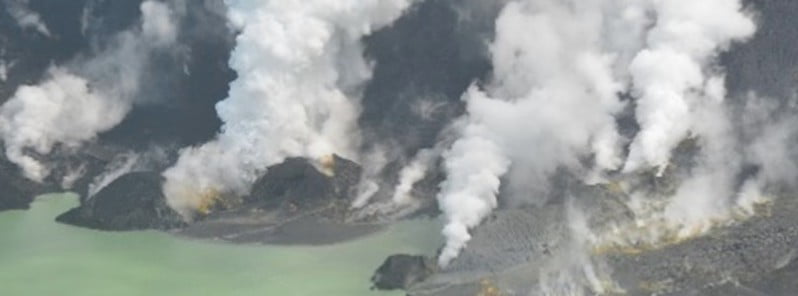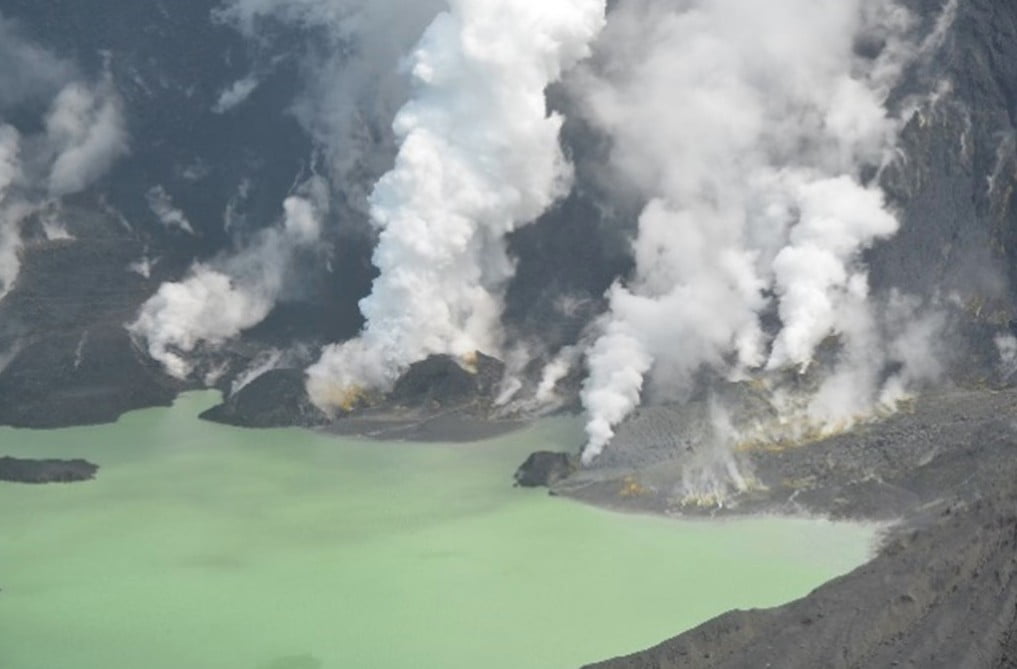Vigorous steam and gas plume emissions at White Island volcano, New Zealand

Observation and gas flights have confirmed that the active vent at White Island/Whakaari volcano in New Zealand continues emitting very vigorous steam and gas plumes. The Volcanic Alert Level remains at 2.
Minor, passive ash emissions, formed when the vent wall fails, are again occurring intermittently from an active vent formed recently at White Island, GeoNet reports.1
On October 5, 2022, GNS Science volcanologists flying around the volcano observed the vent emitting a strong gas and steam plume near vertically. The temperature of the gas and steam plume was measured at 165 ºC (329 ºF).
The North Rim web camera has captured views of the steam and gas emission and minor ash emissions. Sometimes the ash emissions have obscured the camera, but rain can clear the view.

The data from a gas observation flight last week measured a low discharge rate of sulfur dioxide (SO2) of 217 ± 19 tonnes/day. Observations from the TropOMI satellite, which images SO2 once a day, has not shown any signals from Whakaari/White Island since Sunday, September 18.
Geological summary
Uninhabited 2 x 2.4 km (1.2 x 1.5 miles) White Island, one of New Zealand’s most active volcanoes, is the emergent summit of a 16 x 18 km (10 x 11.2 miles) submarine volcano in the Bay of Plenty about 50 km (31 miles) offshore of North Island.
The island consists of two overlapping andesitic-to-dacitic stratovolcanoes; the summit crater appears to be breached to the SE, because the shoreline corresponds to the level of several notches in the SE crater wall. Volckner Rocks, four sea stacks that are remnants of a lava dome, lie 5 km (3.1 miles) NNE.
Intermittent moderate phreatomagmatic and strombolian eruptions have occurred throughout the short historical period beginning in 1826, but its activity also forms a prominent part of Maori legends.
Formation of many new vents during the 19th and 20th centuries has produced rapid changes in crater floor topography. The collapse of the crater wall in 1914 produced a debris avalanche that buried buildings and workers at a sulfur-mining project.2
References:
1 Whakaari/White Island: Active vent creates minor ash emission. Volcanic Alert Level remains at Level 2
2 White Island – Geological summary – GVP
Featured image credit: GeoNet

Commenting rules and guidelines
We value the thoughts and opinions of our readers and welcome healthy discussions on our website. In order to maintain a respectful and positive community, we ask that all commenters follow these rules.